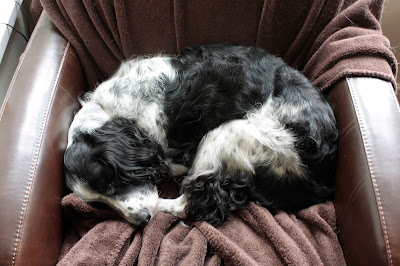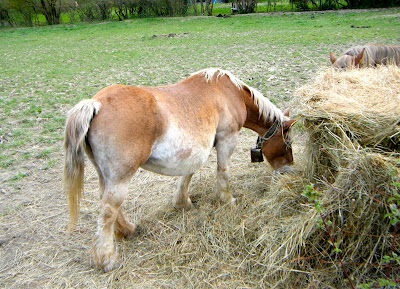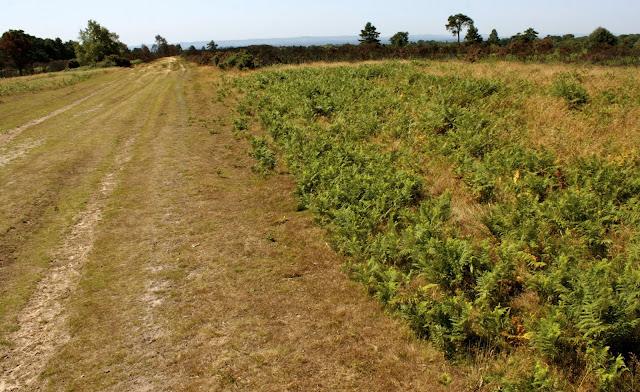A long barrow is a bronze age burial mound usually for a chieftain or somebody of high status and a tumuli is a smaller grave. The most prominent barrow is on the top of Windover Hill above the head of the Long Man, it is approximately twenty metres long and is surrounded by a ditch. According to local folklore this barrow is the giants actual grave, he was killed after having a fight with another giant who lived on Firle Beacon a few miles away. The chalk figure outline was made as a memorial to him apparently. Just below the barrow are several other smaller mounds and round trenches these are the spoil heaps and remains of neolithic flint mining.
Long Barrow on Windover Hill above the Long Man
Another view of the Long Man at Wilmington
Little dog did not take much interest in these bronze age remains, she had discovered a rabbit hole which was much more exciting. It appeared to go down vertically into the ground and reminded me of the rabbit hole that Alice went down on her visit to Wonderland. Judging from the size of the entrance it must have housed some very large rabbits.
Is this the den of a Shuck or of giant rabbits
Or could this have been the den of a 'Shuck' which according to legend is a large black ghostly dog that is supposed to haunt Windover Hill. Apparently shucks are shaggy phantom dogs about the size of a calf and they are associated with ancient trackways and ley lines. There just so happens to be an ancient trackway running across the hill and a ley line running from the barrow, through the Long Man to the church in Wilmington. Some shucks are supposed to be a portent of impending doom and others apparently guard the sites of hidden treasure. Little dog was doing her best to impersonate a shuck by rolling in something horrible giving her the appearance and smell of a demonic hound.
Ancient trackway looking towards Firle Beacon
We left Windover hill by means of an ancient trackway and as we turned a corner, there coming towards us was a shuck. Actually there were about thirty shucks, they were large black and shaggy about the size of a calf (some were the size of a cow). "Bollocks" I thought "I bet we're standing on a ley line as well". The thing about these shucks was that they didn't appear to be particularly canine in appearance, they were more bovine. Whatever, they certainly appeared to be the portent of our impending doom.
A herd of black shaggy shucks, the portent of our doom (possibly)
We were on a section of track that dropped off like a cliff face on one side and had a steep bank on the other. Little dog bravely hid behind my legs as this gang of marauding cattle decided that they had right of way and were going to partake of that right no matter what. Something had to be done and fast; suddenly like those faithful canine companions of film and television, Lassie, Rin Tin Tin and Snowy, Little dog launched herself in front of this seething mass of bovine muscle (or rather she didn't, I launched her with a size nine up her backside).
A faithful canine companion, doing her stuff
Then a very strange and unexpected thing happened, the cows stopped as one and started to look a little worried. "We didn't expect him to throw a dog at us, that's not playing fair". Two of the braver cows were pushed to the front by their compatriots and held a brief parlais with Little dog. After a short 'Mexican standoff' the cows 'bottled it' and as if by a miracle the herd parted to let us pass. "That showed them eh! Little dog, double rations for you tonight".
Tea and Medals with The Queen for a Brave 'Little dog'
Note: This is the last post for about ten days as Mrs C and I are off to sunny Spain and Little dog is going to Grandma's for a bit of Rest and Recuperation after her recent adventures. She will be spoilt rotten, spending most of her day lying on the sofa being fed biscuits and grapes.

















































